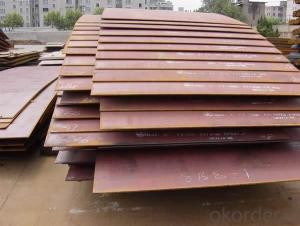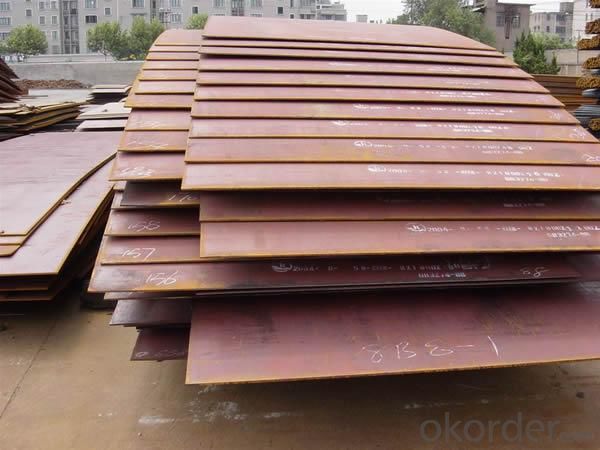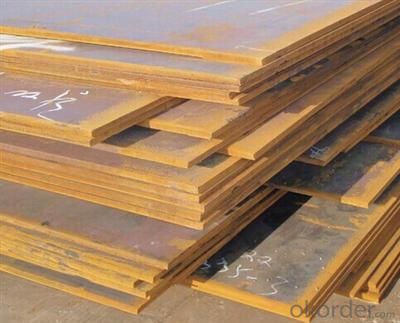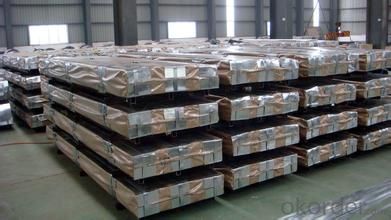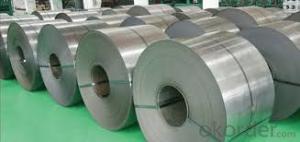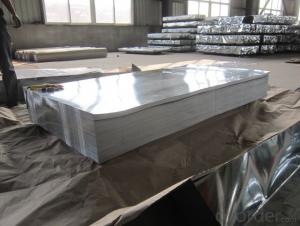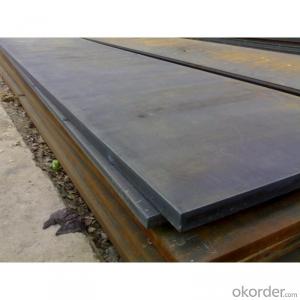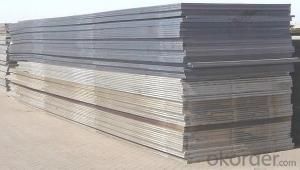Hot Rolled Steel Plate for Shipbuilding
- Loading Port:
- Qingdao
- Payment Terms:
- TT OR LC
- Min Order Qty:
- 1000 m.t.
- Supply Capability:
- 10000 m.t./month
OKorder Service Pledge
OKorder Financial Service
You Might Also Like
Specification
1. Product Description
The Billets as raw materials, through furnace heating, high-pressure water to reduce the phosphorus, then entering the roughing mill, cutting head, end, and then put into the finishing mill, cutting the edge, after the times of straightening, leveling and other finishing line treatment, and then cutting board or coil becomes the hot rolled steel sheet and hot rolled steel coil.
2. Main Features
Characteristics of hot rolled steel hot-rolled steel is a high temperature heating and rolled steel, hot rolled product has high strength, good toughness, easy to processing molding and good weldability and other excellent properties, which are widely used in ship, automobile, Bridges, buildings, machinery, pressure vessels and other manufacturing industries.
3. Excellent Product Image
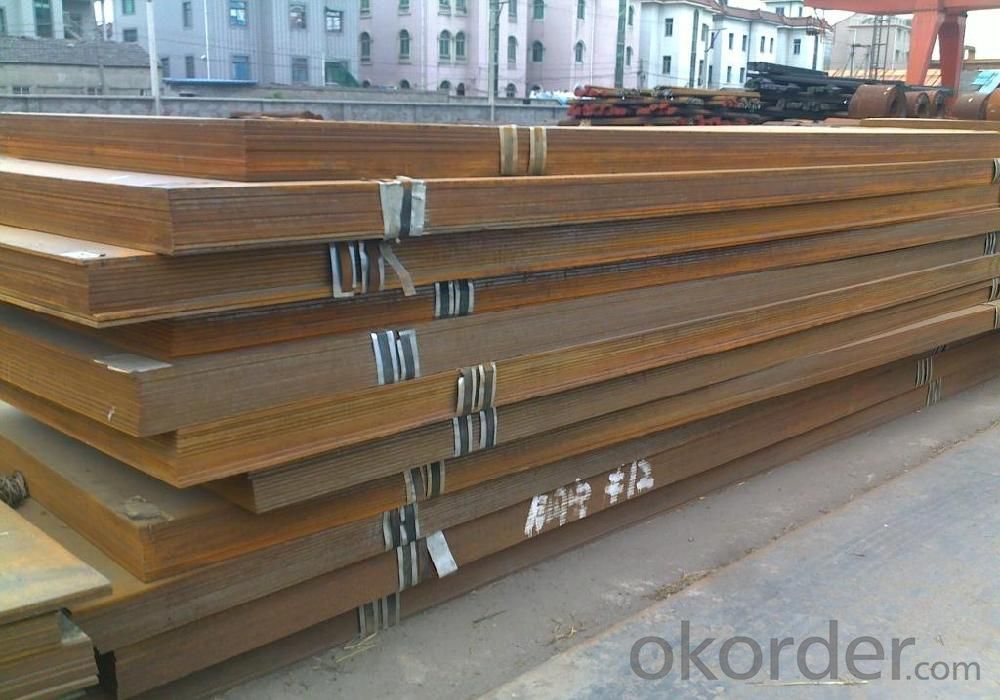
4. Application
Our hot-rolled steel coil and sheet are applied to a wide range of uses such as automobile, electrical appliance, machinery manufacturing, container manufacturing, shipbuilding, bridge, pipeline, and receive high acclaim from our customers for its excellent quality.
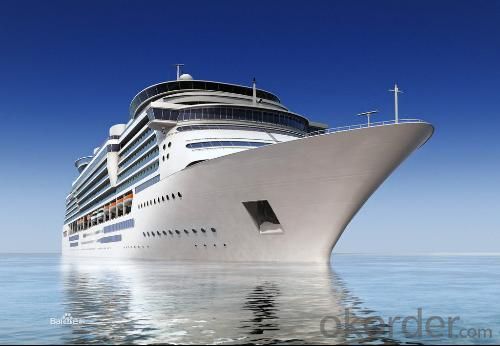
5. FAQ
1.Q: Do you have attended any exhibition?
A: We almost go to Canton Fair and Overseas Exhibitions every year.
2. Q: How to guarantee the quality of the products?
A: We have established the international advanced quality management system,every link from raw material to final product we have strict quality test;We resolutely put an end to unqualified products flowing into the market. At the same time, we will provide necessary follow-up service assurance.
3. Q: How long can we receive the product after purchase?
A: Usually within thirty working days after receiving buyer’s advance payment or LC. We will arrange the factory manufacturing as soon as possible. The cargo readiness usually takes 15-25 days, but the shipment will depend on the vessel situation.
Why choose us?
Pre-sale Service
1. Sample can be offered with sample charge and courier fee by buyer's side.
2. We have full stock,and can deliver within short time.Many styles for your choices.
3. OEM and ODM order are accepted, Any kind of logo printing or design are available.
4. Good Quality + Factory Price + Quick Response + Reliable Service, is what we are trying best to offer you
5. All of our products are produce by our professional workman and we have our high-work-effect foreign trust-worthy sales team.
6. We have 18 years' experience of design, manufacture and sell lingerie, we cherish every order from our honor.
After you choose
1. Count the most efficient shipping cost and make invoice to you at once.
2. Check quality again, then send out to you at 1-2 working day after your payment.
3. Email you the tracking no, and help to chase the parcels until it arrive you.
- Q: How do steel sheets handle water resistance?
- Steel sheets handle water resistance very well due to their inherent properties. Steel is a non-porous material, meaning it does not absorb water. Additionally, steel sheets are often coated with protective layers, such as galvanized or stainless steel finishes, which provide an extra barrier against water penetration. This makes steel sheets highly resistant to corrosion, rust, and water damage, making them suitable for various applications, including roofing, construction, and marine environments.
- Q: How are steel sheets protected against corrosion?
- Steel sheets are protected against corrosion through various methods such as galvanization, which involves coating the steel with a layer of zinc; applying protective coatings like paint or epoxy; using corrosion inhibitors or rust-preventive oils; or implementing cathodic protection techniques. These measures create a barrier between the steel and the corrosive elements, preventing or slowing down the process of corrosion.
- Q: Can steel sheets be used for playground equipment?
- Yes, steel sheets can be used for playground equipment. Steel is a highly durable and strong material that can withstand heavy use and harsh weather conditions, making it suitable for playground structures such as climbing frames, slides, and swings. Additionally, steel sheets can be shaped and formed into various designs, offering flexibility in creating engaging and safe play structures for children.
- Q: What is the purpose of steel sheets?
- The purpose of steel sheets is to provide a durable and versatile material that can be used in various applications such as construction, automotive manufacturing, and fabrication. They are known for their strength, resistance to corrosion, and ability to be formed into different shapes, making them an essential component in many industries.
- Q: What is the average lifespan of a steel sheet roof?
- The average lifespan of a steel sheet roof can vary depending on various factors such as the quality of the steel, installation techniques, climate conditions, and maintenance. However, a well-maintained steel sheet roof can typically last between 30 to 50 years or even longer.
- Q: What are the properties of deep drawing properties in sheet steel?
- If the performance is different on the plane, the ear will appear. On the thickness of the performance is not good, there will be leakage phenomenon. Generally, deep drawing properties are indicated by R values.
- Q: How can steel sheets be protected from rusting?
- Steel sheets can be protected from rusting by applying a protective coating such as paint, galvanizing, or using corrosion-resistant alloys. Regular maintenance, including cleaning and lubricating, can also help prevent rust formation on steel sheets.
- Q: Is the cold rolled steel plate good or the stainless steel plate?
- Although it is impossible to provide specific parameters to prove, in fact, most stainless steel plates are used in oven making. Corrosion resistant, easy to clean, safe and sanitary.
- Q: What is the typical price difference between galvanized and non-galvanized steel sheets?
- The price difference between galvanized and non-galvanized steel sheets typically fluctuates based on various factors, including the steel grade, market conditions, and the size and quantity of the sheets. Generally, non-galvanized steel sheets are slightly less expensive than galvanized ones. Galvanization is a process that involves applying a protective zinc coating to the steel, which helps prevent rust and corrosion. This extra layer of protection enhances the steel's durability and lifespan, making it suitable for outdoor use or in environments exposed to moisture or chemicals. The cost of galvanizing steel includes additional manufacturing steps, such as cleaning, dipping the steel in molten zinc, and post-treatment processes. These additional steps contribute to the higher price of galvanized steel sheets compared to their non-galvanized counterparts. As a rough estimate, the price difference between galvanized and non-galvanized steel sheets can range from 10% to 30%. However, it's important to note that this is a general range, and actual prices may vary depending on the specific market conditions and supplier pricing. To obtain accurate and up-to-date pricing information for galvanized and non-galvanized steel sheets in your specific region or market, it is advisable to consult with steel suppliers or conduct market research.
- Q: Can the steel sheets be used for fencing or security purposes?
- Certainly! Fencing or security purposes can indeed be fulfilled by employing steel sheets. Given their robustness and durability, steel sheets find widespread application in the construction of fences and security barriers. These sheets offer a solid and impregnable barricade, rendering them ideal for safeguarding high-security zones like prisons, military bases, and industrial complexes. Moreover, steel sheets can be tailored to meet specific fencing requirements, providing a plethora of designs and varying heights. Furthermore, the material's resistance against corrosion ensures enduring defense against environmental factors, thereby establishing it as a dependable option for fencing and security purposes.
Send your message to us
Hot Rolled Steel Plate for Shipbuilding
- Loading Port:
- Qingdao
- Payment Terms:
- TT OR LC
- Min Order Qty:
- 1000 m.t.
- Supply Capability:
- 10000 m.t./month
OKorder Service Pledge
OKorder Financial Service
Similar products
Hot products
Hot Searches
Related keywords
